By Eduardo Morales Casas
Did you know that mycorrhizae are capable of improving the efficacy of sowing Gramineae?
We recently conducted a trial to verify this, applying mycorrhizae to four different types of Gramineae: oats, wheat, sorghum and corn, under conditions of a plastic tunnel and in trays for germination, where a better performance was observed when using mycorrhizae and root growth in vegetative development. Physical measurements, internal analysis of random tables and descriptive statistics were carried out, which resulted in there effectively being an improvement when applying mycorrhizae before sowing.
The objective of this trial is to prove the efficacy of mycorrhizal fungi use in sowing different Gramineae (wheat, oats, sorghum and corn), during the first 15 days, observing the growth of roots and vegetative stage development.
What are mycorrhizae?
Mycorrhiza comes from “mycos” (fungus) and “rhizos” (roots). Mycorrhiza is the symbiotic association between a fungus (mycelium) and plant roots. They both grow in symbiosis and benefit from each other, given that the fungus is responsible for absorbing water and nutrients from the soil and protecting the roots from certain diseases. Meanwhile, the plant provides the sugar, amino acids and other substances it needs during photosynthesis. It should be noted that over 90% of all terrestrial vegetation is in symbiosis with fungi, i.e., mycorrhizae are present.
There are two types of mycorrhizae based on the relationship established by the hyphae (microscopic filaments) of the fungus with plant root cells:
- Endomycorrhizae: the mycelium (fungus) is first deposited in the plant root intercellularly and, then, it ends up penetrating the root system cells.
- Ectomycorrhizae: unlike the previous form, the hyphae do not penetrate plant roots; they simply invade the root system and form a kind of “mantle” around those that are less thick.
Mycorrhizal fungi benefits are mainly the symbiotic relationship between the fungus and the plant, which is greatly beneficial to both. Thus, while the vegetation will notice how the nutrient reserves it needs for growth increase, the fungi will obtain sugars and the plant will acquire the benefits listed below:
- Enhanced water and nutrient absorption.
- Increased periods of drought and soil tolerance with high salt concentrations.
- Greater resistance against the attack of pathogenic fungi that can cause diseases.
- Optimal root development and, therefore, improved plant growth.
- Enrichment of the soil structure.
What are Gramineae?
Gramineae are plant species or herbs of the Poales order of monocotyledonous plants, belonging to the family of herbaceous plants.
These plants have dry grains, spiked flowers, long alternate leaves and cylindrical stems, rarely woody. They can grow every year, every two years, or even have continuous growth; they contain over 670 genera and about 10,000 species. They pollinate with the wind and develop in various environments, their pollen being one of the most allergenic. It is the fourth family with the greatest species richness and belongs to the group of plants with the greatest repercussion and economic importance in the world.
The history or origin of these plant species dates back to around 89 million years. They are present in the human diet, found in cereals and their derivatives, as well as in feed (grass) for livestock or forages. They are also detected in industrial products such as beer and edible oil, including perfumery products, basketry, footwear, paper fiber, and even decoration.
Types of Gramineae
Below is a classification of grass family plants:
- Annual Gramineae: wheat and oats, with a single cycle, reproducing only once a year.
- Perennial Gramineae (continuous growth): bamboo and grasses that are grown more than once a year.
The primary grass family species are: canary grass, rice, oats, bamboo, barley, rye, corn, millet, orchard grass, sorghum and wheat, among other cereals.
The Importance of Gramineae
In addition to the benefits mentioned above, it is important to stress its role in biomass production, contributing not only to ecological balance, but also to food security and global economic development.
Materials and Methods
Gramineae was sown in the Ferti-Organic experimental field, located in Brownsville, TX. A greenhouse-type tunnel with plastic and a shade mesh, eight trays with 50 cavities each and rooting substrate were used. The way chosen to sow Gramineae was by breeding the oat, wheat, sorghum and corn seeds, with direct sowing and sprinkler irrigation inside the tunnel.
The roots were checked 15 days later, both from the treated ones and from the control ones; four groups of plants were taken to carry out a random table design, evaluated through F calculates and descriptive statistics. The root process and development was photographically monitored, both in the substrate and in bare roots. Measurements were taken and each treatment analyzed 15 days after being planted. The following image shows the field work carried out.
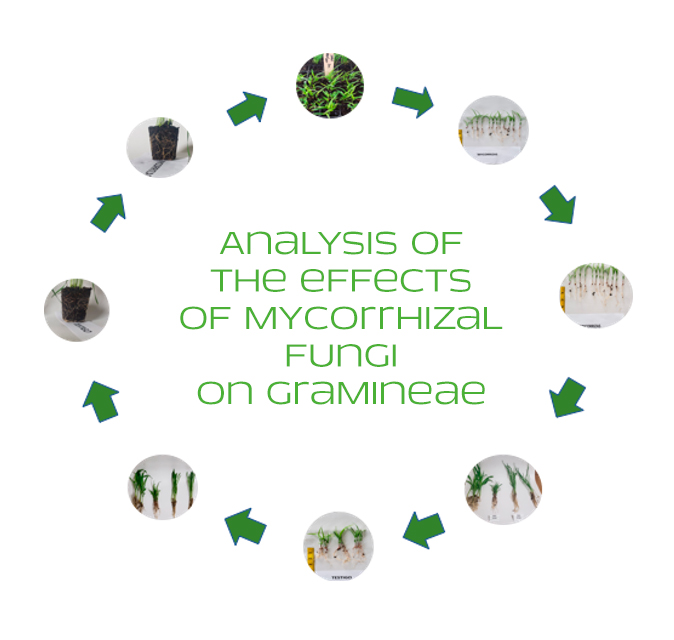
Figure 1: Analysis of the Effects of Mycorrhizae on Gramineae. Source: Personal Research (2022).
Materials
- ½ pound of wheat
- ½ pound of oats
- ½ pound of sorghum
- ½ yellow corn
- 8 trays with 50 cavities each
- Mycorrhizae (Ferti-organic)
- Rooting substrate
- Marking materials
Mycorrhizae Ferti-Organic
Ultrafine Endomycorrhizae is a mycorrhizal inoculum powder comprising four scientifically formulated endomycorrhizal fungi propagules. It is a wettable powder with a particle size under 300 microns, ideal for “water in” or “spray” applications.
Wheat (from Johnny’s Selected Seeds)
Glenn hard red spring wheat exhibits very good test weight and protein, has excellent disease resistance, and shows the best tolerance to scab (Fusarium head blight) yet found. It should be sown as soon as possible in spring, less in dry climates, considering that delay reduces yield. In dry climates, it must be harvested from August to September.
- Blue label/certified seed.
- USDA-certified organic
- Average 15,300 seeds/lb.
Oats (from Johnny’s Selected Seeds)
It presents early maturing and good standing with very high yields. A good choice for underseeding with a legume. Oats are a quick-growing green manure. For winter cover, sow by early September in the North, slightly later farther south; the heavy stubble will prevent erosion and oats will not regrow in the spring like winter rye.
- USDA-certified organic
- Average 14,660 seeds/lb.
Sorghum (Pioneer brand 8419)
Intermediate-short cycle hybrid, with fast drying speed. Due to its tolerance to drought, it has good stability in a diversity of environments. It is a high-volume material for its cycle, making it attractive for the early preparation of whole plant silage.
Packout Corn (from Johnny’s Selected Seeds)
Bicolor (sh2) with excellent performance in the South. Adaptable variety resilient to tough field conditions. Great in southern latitudes and for the late slot in the North. Good cool-soil germination. High resistance to common rust; intermediate resistance to northern corn leaf blight and southern corn leaf blight.
BERGER BM06 Substrate
Classic peat-and-perlite growing medium. It is made with superior ingredients and stringent quality-control specifications, easy to handle in various conditions and sizes of containers or trays.
Root Results
The result of the application of mycorrhizae in all cases is favorable for root development, observing whiter roots, meaning that they are healthier, longer, with a greater population or development of secondary and adventitious roots and are a bit thicker. With respect to the mean calculation and as shown in the image below, the development of the roots to which the treatment was applied is greater; however, in the statistical analysis of the “F” test, there is no major statistical difference in the application of sorghum and wheat, while there is a major difference in oats and corn.
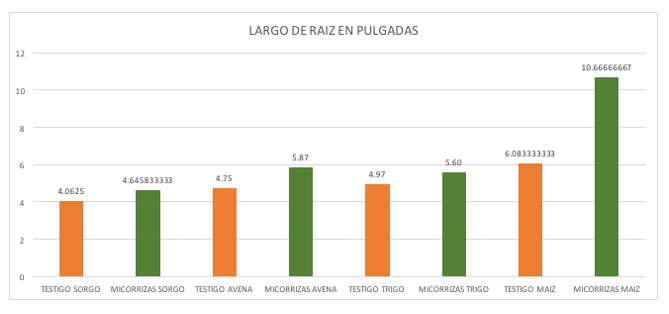
Graph 1: Root length in inches. Growth averages for each treatment and grass family species. Source: Personal Research (2022).
Below is the statistical analysis and “F” test performed by treatment and for each grass family species.
Corn
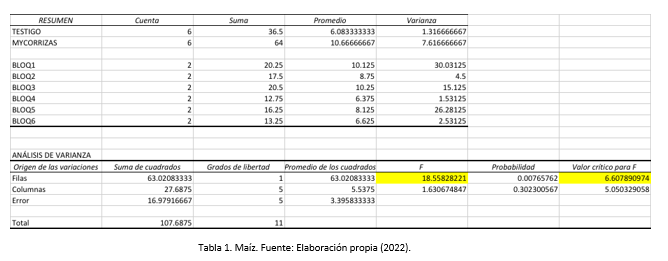
Table 1. Corn. Source: Personal Research (2022).
Wheat
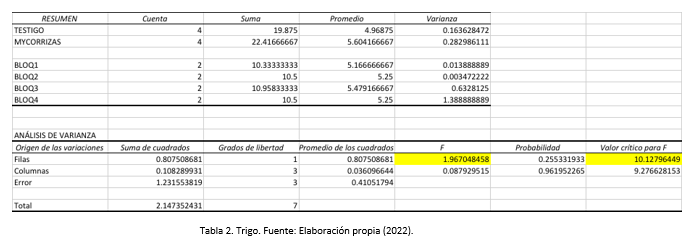
Table 2. Wheat. Source: Personal Research (2022).
Oatmeal
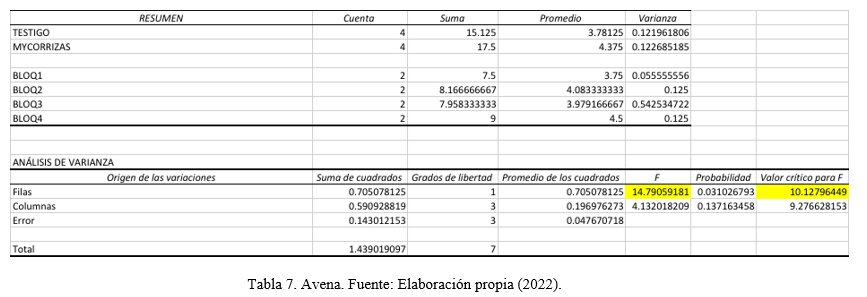
Table 3. Oats. Source: Personal Research (2022).
Sorghum
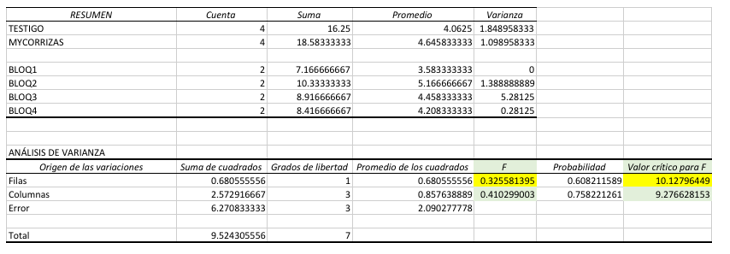
Table 4. Sorghum. Source: Personal Research (2022).
The image below shows the contrast between a control corn root and a mycorrhizae-treated corn root.
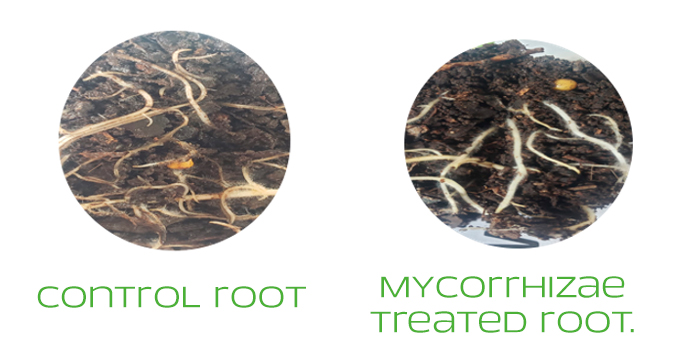
Image: Control root vs. mycorrhizae-treated root.
Source: Personal Research (2022).
Leaf and Stem Results
We observed that the application of mycorrhizae in all cases was favorable in the progress of vegetative development (leaves stems), showing much higher performance when applying the treatment. With respect to the statistical analysis and the “F” test, there are major statistical differences in the four cases, finding very vigorous plants with an intense green. No type of chlorosis was observed in two treatments. The mean behavior is shown in the graph below.
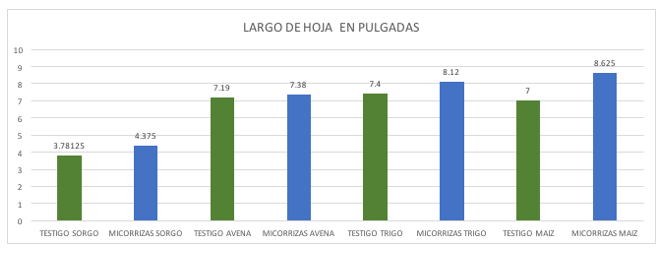
Graph 2. Leaf length in inches. Mean behavior. Source: Personal Research (2022).
Corn

Table 5. Corn. Source: Personal Research (2022).
Wheat

Table 6. Wheat. Source: Personal Research (2022).
Oatmeal

Table 7. Oats. Source: Personal Research (2022).
Sorghum

Table 8. Sorghum. Source: Personal Research (2022).
Conclusions
The result of this trial allows us to conclude that the use of mycorrhizae in sowing different Gramineae in the early stages of plant development is completely effective. As for roots, since there was no major statistical difference in two of the proposed Gramineae, enhanced root development and whiter roots were observed, the latter of which is synonymous with healthy roots. A greater number of secondary roots and absorptive hairs or adventitious roots can be seen. The progress of roots and the enhanced development of the vegetative stage is striking.
References
Allen, M.F. (1991). The Ecology of Mycorrhizae. Cambridge: University Press.
Cerisola, C. (2015). La materia orgánica edáfica. Manejo y conservación de suelos. Argentina: Department of Environment and Natural Resources. UNLP.
Inter-American Commission for Organic Agriculture (ICOA). (2022). Official site. https://www.ciaorganico.net/
Franco Navarro, J.D. (). Efectos beneficiosos de las micorrizas sobre las plantas. Spain: Universidad de Sevilla.
García, M.E. and Bermúdez, G. (2014). Alimentos sustentables, de la Tierra a la Mesa. Mexico: CONABIO/Calmil Comunicación.
Johnny’s Selected Seeds. (2022). Oats. Producer’s Library. https://www.johnnyseeds.com/farm-seed/grains/oats/oats-common-organic-cover-crop-seed-2509G.html
Ferti-Organic. (2022). Official site. https://www.ferti-organic.com/

